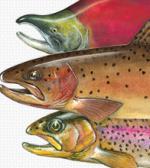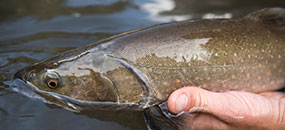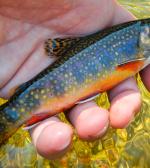Horses are a quick, and easier, way to get into the backcountry surrounding Yellowstone National Park. Walt Gasson photo.
By Walt Gasson
TETON WILDERNESS — It’s been a great blessing in my life – indeed one of the greatest blessings in my life – to be able to come to know and love some of the wildest country left in America. I don’t remember a time when I didn’t love it and feel at home in the wilderness (with a lower case w) of the American West.
But last week, I did something I’ve never done before. I spent several days in the Teton Wilderness on the upper Yellowstone River. It’s amazing country – quite possibly the wildest place I’ve ever been.
The Teton Wilderness just south of Yellowstone National Park. Nathan Counts photo.
You get a feel for that just getting there. It’s about 30 miles from the Turpin Meadows Trailhead near Moran Junction to Yellowstone Meadows and Hawk’s Rest. Up the Buffalo Fork to its North Fork, up over the divide to Trail Creek and down to Pacific Creek. Over Two Ocean Pass and the Continental Divide to Atlantic Creek and down into the Yellowstone country.
Elk and moose, wolves and grizzlies, sandhill cranes and bald eagles.
And silence. Silence so big and so all-consuming that you can feel it in your heart. The wind blows through the skeletons of trees that died in the 1988 fires and the moon shines on the ripples of the "Roche Jaune". And beneath those moonlit ripples, there are fish.
A Yellowstone cutthroat from the upper Yellowstone RIver. Nathan Counts photo.
Big fish. Our horses flushed spawning Yellowstone cutthroats laying silent and deep in the gravelly pools on the bends. Those fish were the reason we were there. My TU colleague and good friend Dave Sweet and others have worked long and hard to help Yellowstone cutts come back from near genocide in Yellowstone Lake at the hands (or mouths) of illegally introduced lake trout. A decade ago, the cutthroat spawning runs that supported grizzlies and other species were all but gone. But things are different now.
Searching for Yellowstone cutthroat where not many have been seen in recent years due to the impacts of nonnative lake trout in Yellowstone Lake. Nathan Counts photo.
Dave Hettinger saw it. The longtime outfitter from Idaho before this and Montana before that noticed increasing numbers of fish each year coming up the Yellowstone as Sweet and his colleagues worked to reduce lake trout numbers in Yellowstone Lake. Their success gave the native Yellowstone cutts a chance, and they responded.
Hettinger was kind enough to offer to take me in to document what he was seeing. Along with his two packers Bob and Nate, we found encouraging numbers of fish in the Yellowstone, in Thorofare Creek and in Atlantic Creek. That’s the good news – it’s working. Yellowstone cutthroats are coming back to their namesake river to spawn. There’s a lot of work still to be done downstream to keep the lake trout in check, but it’s working.
The return of Yellowstone cutthroat in the tributaries of Yellowstone Lake means more bent rods for lucky anglers. Walt Gasson photo.
Sweet is optimistic.
“It’s working! That’s the bottom line – it’s working. We’ve worked so hard for many years now to get to this point. Lake trout are declining and cutthroats are increasing. We’ve just got to keep on it. The success story is within our reach,” he said.
Walt Gasson is the director of Trout Unlimited endorsed businesses. He is based out of Cheyenne, Wyoming. He can be reached at wgasson@tu.org







Comments
TU Business member Dave Hettinger was the star of this expedition. Check out his website at http://www.hettingeroutfitting.com/